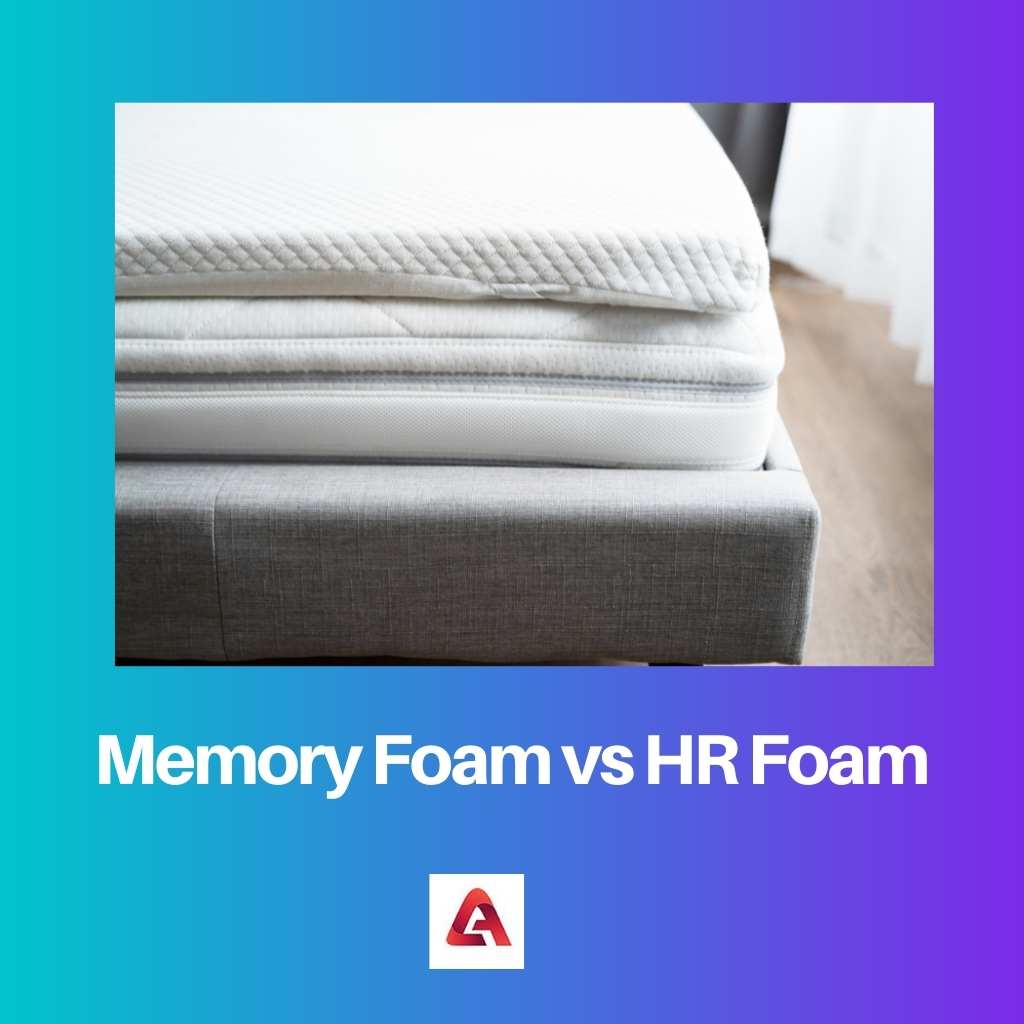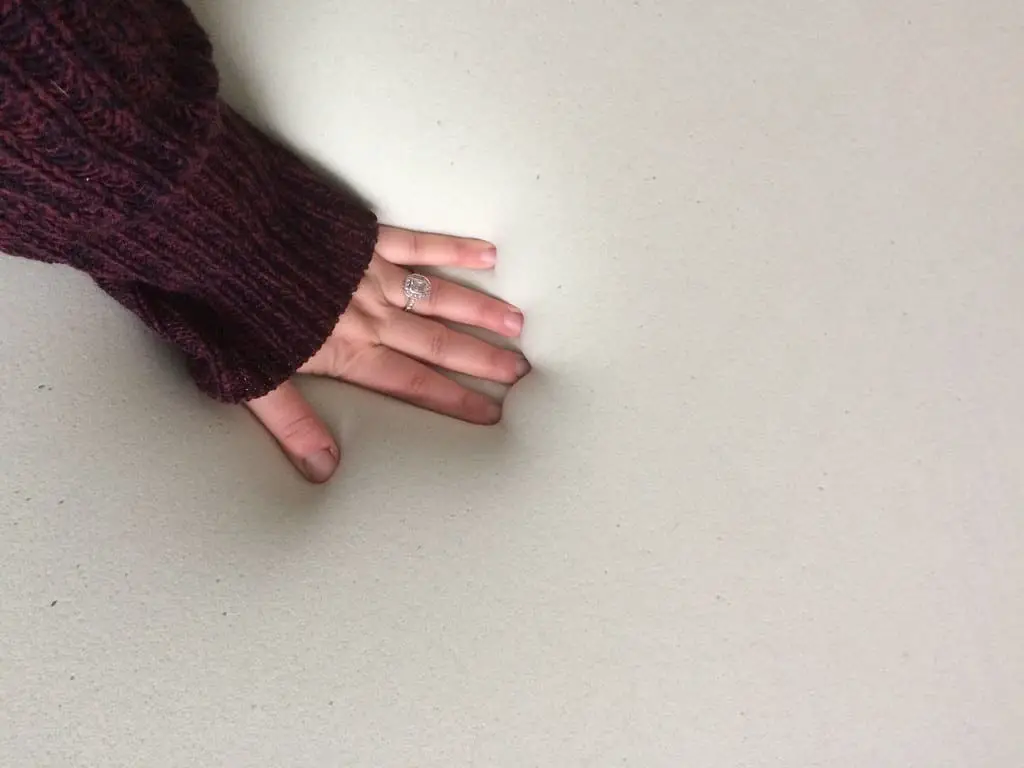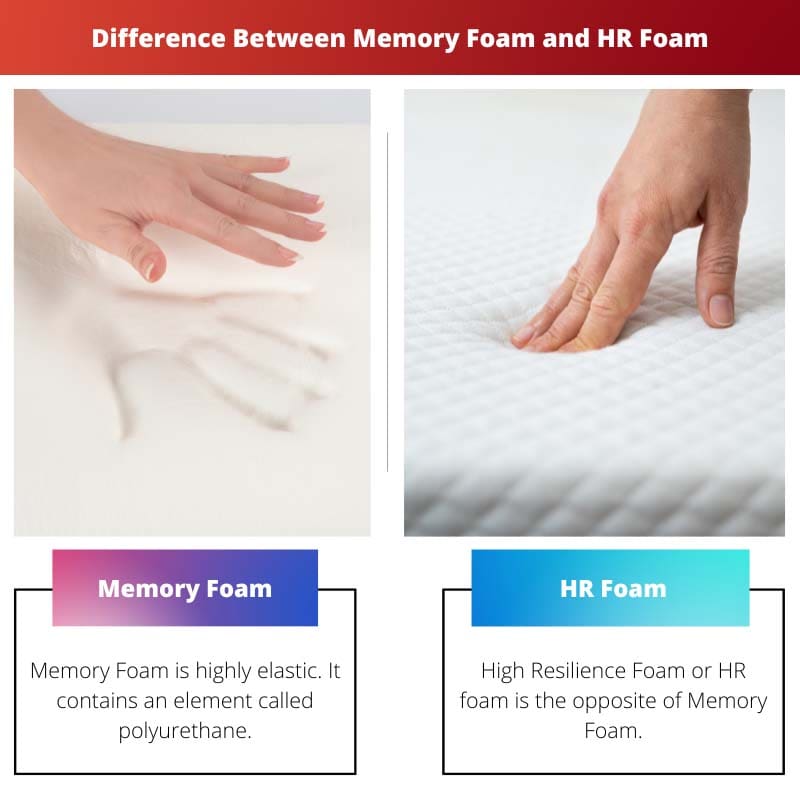The foam consists of a gas that is trapped inside a solid or a liquid. The volume of gas in foam is very large. Bath sponge, soap foams or suds or foam found inside the beer glass are all examples of it.
Foams are multi-scale systems. Solid foams are of two types i.e. open and closed. In open solid foams, gas is free to move. In closed foams, gas pockets are sealed.
Generally, gases present inside a foam can be of various shapes and sizes. Hr Foam and Memory Foam are the two types of foam.
Key Takeaways
- Memory foam is a viscoelastic material that contours the body, providing pressure relief and support.
- HR (High Resilience) foam offers more firmness and support than memory foam, bouncing back quickly after removing pressure.
- Memory foam is better suited for people seeking pressure relief and motion isolation, while HR foam caters to those who prefer a responsive feel and additional support.
Memory Foam vs HR Foam
Memory foam is a type of foam that is sensitive to pressure. It is known for its ability to conform to the body’s shape and provide excellent pressure relief. HR foam is a high-resilience foam that is made from polyurethane materials created to offer a high level of support, comfort and durability.

Memory Foam is highly elastic. It contains an element called polyurethane. Because of this element, the density and viscosity of memory foam increase.
Memory foam is referred to as low-resilience polyurethane foam. Bubbles present inside the memory foam are open that provides air to move freely.
Memory foam is very soft, and it also moulds itself according to the body heat in a few minutes. It also takes the shape of the body and then quickly regains its shape if it’s new.
High Resilience Foam or HR foam is the opposite of Memory Foam. They are hard as compared to Memory Foam. HR Foam is highly responsive and bouncy, which helps the mattresses to gravitate.
HR Foams are not very popular. But they make an important layer in the base that gives the mattress a higher density. Because of HR foam, present mattresses don’t sink. They also consist of polyurethane and a gas.
Comparison Table
| Parameters of Comparison | Memory Foam | HR Foam |
|---|---|---|
| Odour | Aloevera, activated charcoal, green tea | Releases off-gas. |
| Durability | Can last 8 to 10 years. | Highly durable can be lost even longer. |
| Comfort | Softer, great support, moulds into body shape and heat. | Provides edge support, bouncy etc. |
| Temperature | Regulates temperature according to body heat. | Cannot regulate temperature |
| Bounce | Not Firm, not bouncy | Firm and bouncy |
What is Memory Foam?
Memory Foam came into existence in 1966. It was developed by NASA when they were trying to improve the quality and safety of aircraft cushions.
Memory foam was temperature-sensitive and initially referred to as temper foam. Memory foam was created by inserting gas into the matrix that has an open-cell structure.
It creates pressure inside because of this but was also able to regain its shape into the original one. NASA released Memory foam into public in the 1980s. Memory Foam was initially used in the medical sector for patients.
Initially, it was very expensive. But when the usage of memory foam increased globally in mattresses, cushions, pillows, blankets, shoes etc. It becomes cheaper.
In today’s time, the third generation of memory foam has come.
Where gel is used between the Visco foam, so that heat particles trapped can be reduced, make the mattresses softer, it also speeds up the spring back time as well.
Then beads were introduced in which gel was infused, and it became the phase changer.
After gel, other materials are also infused, like aloe vera, green tea extract and activated charcoal etc., so that odour can be removed from the mattress.
Memory Foam also provides aromatherapy when used during sleeping. Memory foam is denser that making it heavier and more supportive. They are sold at a very higher rate than the normal or traditional ones.

What is HR Foam?
HR Foam, also called High Resilience foam, has higher responsiveness. They are not as popular as Memory Foam are. Mostly HR foam is placed in the base of the mattresses because it gives high resilience to them.
Because Hr foam is harder, it will not sink the mattress as in-memory Foam. They are also very bouncy.
So if your mattress is bouncy, then it is because of HR Foam.HR Foams are made by mixing off gas and polyurethane.
HR Foam is considered more expensive than other forms. The durability of HR foams is higher. They can last up to 9 to 12 years.
HR Foam is very firm with high density.HR Foam is also able to treat the back pains of the lower body and also body pain.
They are very elastic and provide excellent support. Polymer used in HR Foam is Polyol to diisocyanate in a ratio of 2:1. It can be used in middle layers as well.
Main Differences Between Memory Foam and HR Foam
- The odour of Memory Foam can consist of Aloe vera, activated charcoal, green tea etc. odour of HR Foam releases off-gas.
- The durability of HR foam is higher than Memory Foam.
- Memory Foam is more comfortable than HR Foam. Because of its softness, great support and moulding power.
- Memory Foam regulates the temperature of the body according to heat. But HR Foam is unable to do so.
- Memory foam is not firm. HR Foam is firm and bouncy.

